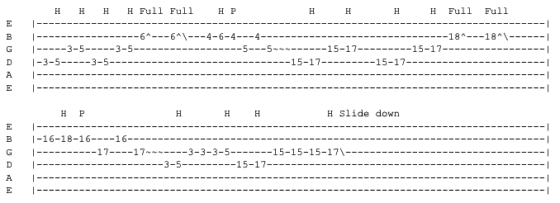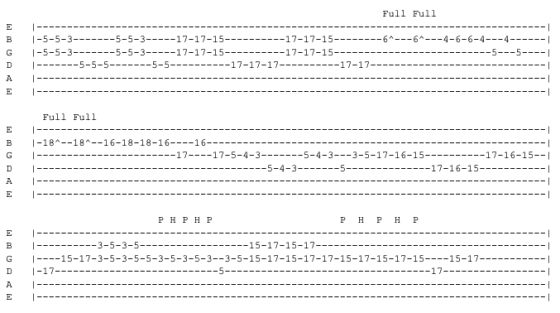Many guitarists want to improve the quality and substance of the music they play. After learning dozens of scales and riffs and learning how to play them at warp speed, you may want to learn how to improvise licks that are memorable, show taste and demonstrate your individual style. One practicing method I have found that really helps in this area is what I refer to as the call-and-response method.
The call-and-response method is a mirroring exercise that forces you to really listen to yourself as you improvise. The requirement to listen will help you develop your ear and will also ensure that your mind and brain are playing the notes -- not just your fingers. When jamming or practicing, many times our fingers go on 'auto-pilot' while our head takes a break. At times like these we tend to overplay -- and run up and down the neck at breakneck speed spewing memorized scales and patterns. Using the call-and-response method when practicing will help apply the brakes to your runaway fingers, while encouraging your creative mind to think up original material.
Getting started with this method is easy. I have recorded several examples (in the key of C) of call-and-response licks below. It's not important to learn the licks as they are notated; the idea is to present some examples of the technique so you can see how it's supposed to work.
Simply play a short lick on the portion of the neck before the ninth fret. Then, immediately play the same lick one octave higher on the neck. It's a good idea to start with some very short ideas that are simple and easy to remember before moving on to more complex fretwork.
Example 1 is a short 10 note lick that demonstrates the idea. The lick is easy to remember, which is exactly the idea (when you get good at this stuff you can try to stump yourself with longer phrases).

Example 1 - MP3
The second example 'ups the ante' a bit. This run consists of 13 notes (the 'call'), and is immediately followed by the 13-note 'response', one octave higher. Try to match your inflections and pick attacks as closely as possible when duplicating the lick one octave higher. For example, if you hit a false harmonic on the 13th note of the call, try to hit the same harmonic on the 13th note of the response. Listen closely as you play the first batch of notes, and try to precisely mirror your playing (even if you make a mistake!)

Example 2 - MP3
The next example uses some hammer-ons, pull-offs, and bent notes and well as being a bit longer. Once the first section is mirrored, a second, shorter lick is played and also duplicated one octave higher. Remember, using all the many techniques you have for attacking notes means you have to pay closer attention as you play, in order to duplicate your licks exactly.

Example 3 - MP3
The fourth and final example is a somewhat longer example demonstrating how it should sound when you are going back and forth, playing new licks each time, and jumping up past the 12th fret to play the response. You can alternate between shorter and longer licks or easy and difficult licks. It is also a good idea to attempt to play as smoothly as possible; try to play the response licks in time with the beat. Practice with a drummer or drum machine if you think your timing needs work.

Example 4 - MP3
You can extend your licks much longer with this method when your ear improves and you learn to make your musical phrases memorable. Practicing this way will also yield better material for songs and melodies since you are not simply exercising your hands and fingers, but using your imagination and your memory as a unit to improve the end result -- what the listener will ultimately hear.
Dan McAvinchey is a guitarist and composer living in Raleigh, NC.
He believes every musician or composer has the power to write, record and release their own music.